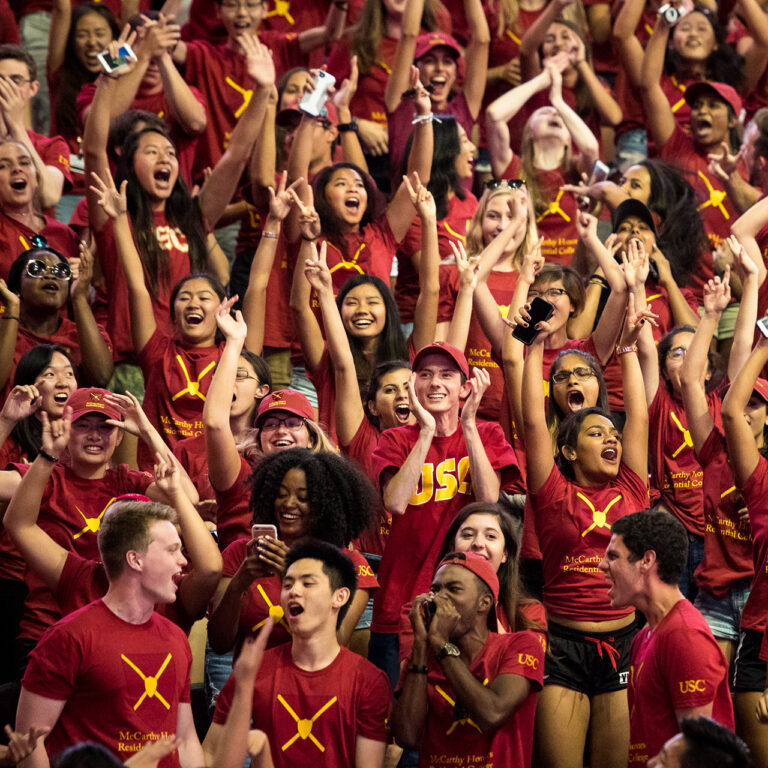Fred D. Fagg, Jr.
Taking the helm of the university in September 1947, Fred D. Fagg Jr. joined an institution whose facilities were stretched to the limit to accommodate throngs of veterans taking advantage of the educational opportunities afforded by the GI Bill. He immediately turned his attention to easing space shortages, and in April 1948, USC dedicated some 29 buildings – most of them former U.S. Army barracks – that were donated by the Federal Works Agency and relocated from Santa Ana Air Base. Fagg also initiated the construction of much-needed new buildings, including a cafeteria and residence halls as well as classroom and research facilities.
Overall, support for higher education increased during this time, and USC entered an era of maturity and increased significance both nationally and internationally. Fagg hastened the process by instituting modern cost-accounting practices, establishing a development office and increasing library holdings by two-thirds. He also began a program of land acquisition, with the goal of expanding the boundaries of the University Park campus to encompass the area bounded by Jefferson Boulevard to the north, Exposition Boulevard to the south, Figueroa Street to the east and McClintock Avenue to the west. Additionally, it was under his watch that the university purchased land near the county hospital to create the Health Sciences campus.
1948: Troy Camp is founded. Old College, billed in 1884 as the university’s first permanent building, is declared a fire and earthquake hazard, and is razed.
1949: Using the Hancock Foundation-sponsored benthoscope — a five-foot ball with steel walls and quartz windows for viewing the mysteries of the deep — USC’s Otis Barton sets a world record by becoming the first mortal to descend alone to a depth of 2300 feet off Santa Cruz Island. Daniel C. Pease and Richard F. Baker, both assistant professors in USC’s medical school, use an electron microscope to take the world’s first photograph of genes.
1950: Life magazine singles out USC’s Frank Baxter as one of the eight finest college professors in the United States. (Baxter received two Emmys for his innovative “Shakespeare on TV” course.)
1952: USC’s Health Sciences campus opens. On the University Park campus, the Norris Dental Science Center opens, capable of housing the entire operation of the dental school. USC initiates the first doctoral program in social work in the western United States. USC’s Institute for Safety and Systems Management — the first academic unit in the country to offer degree programs in safety, human factors and systems management — is launched. USC becomes the West’s first institution fully equipped to produce a television show.
1953: A new men’s residence, David X. Marks Hall, is dedicated.
1954: Young trumpet player and Trojan Marching Band member Herb Alpert works his way through two years of USC by playing at weddings and bar mitzvahs. USC’s first SongFest is held at the Greek Theater. USC inaugurates a cross-disciplinary Division of Communication involving the departments of cinema, drama, journalism, speech and telecommunications, providing an integrated course around the concept of human communication.
1955: California names USC’s first building, today’s Widney Alumni House, as State Historical Landmark no. 536.
1956: The Face of Lincoln, a film created by Merrell Gage, head of USC’s sculpture department, and produced by the university’s cinema department, wins an Academy Award for best short documentary.
1957: USC’s first computer — the gift of an alumnus — is installed in Biegler Hall. USC begins its tradition of on-campus pre-game picnics.
